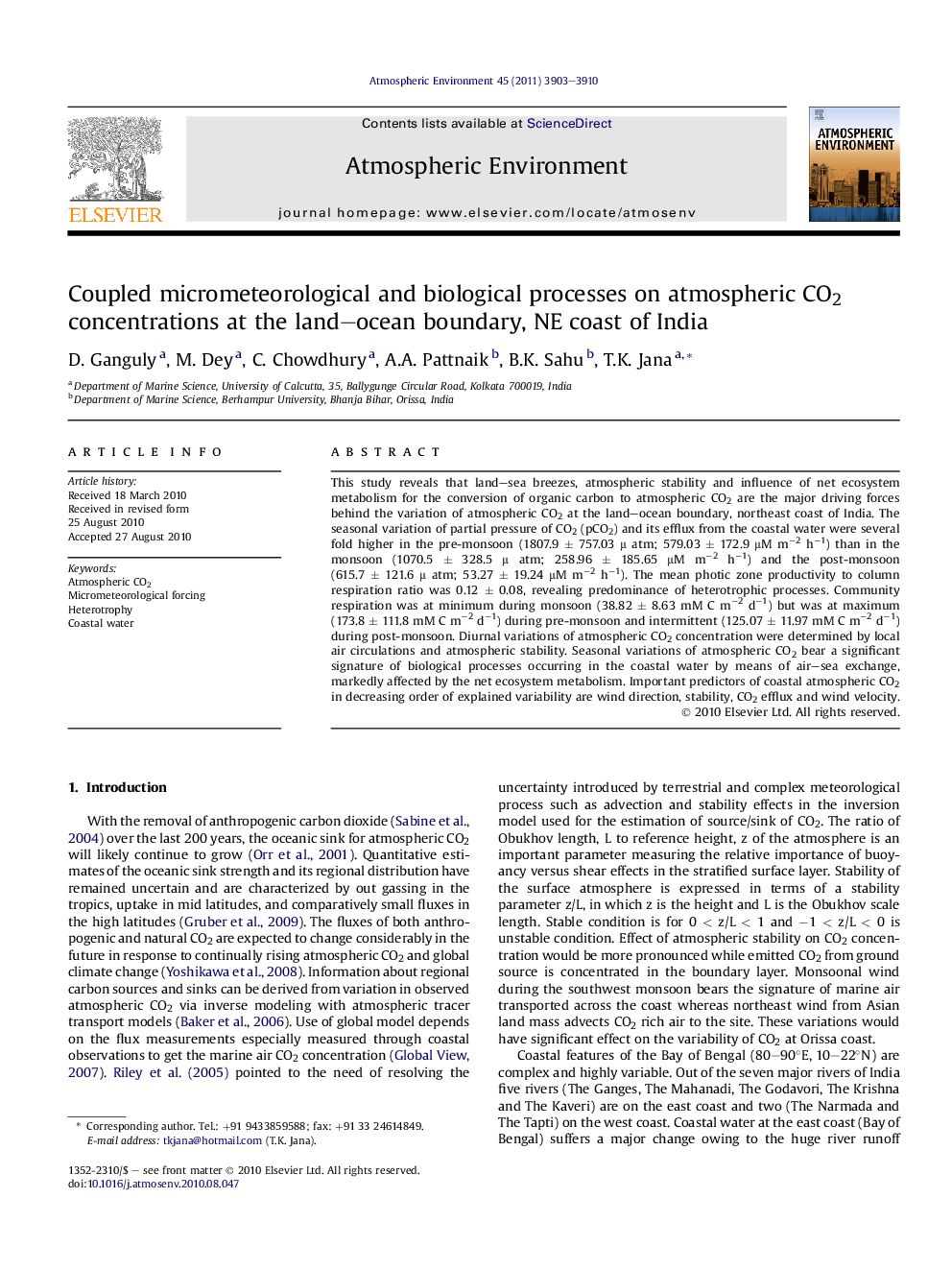| کد مقاله | کد نشریه | سال انتشار | مقاله انگلیسی | نسخه تمام متن |
|---|---|---|---|---|
| 4439700 | 1311029 | 2011 | 8 صفحه PDF | دانلود رایگان |

This study reveals that land–sea breezes, atmospheric stability and influence of net ecosystem metabolism for the conversion of organic carbon to atmospheric CO2 are the major driving forces behind the variation of atmospheric CO2 at the land–ocean boundary, northeast coast of India. The seasonal variation of partial pressure of CO2 (pCO2) and its efflux from the coastal water were several fold higher in the pre-monsoon (1807.9 ± 757.03 μ atm; 579.03 ± 172.9 μM m−2 h−1) than in the monsoon (1070.5 ± 328.5 μ atm; 258.96 ± 185.65 μM m−2 h−1) and the post-monsoon (615.7 ± 121.6 μ atm; 53.27 ± 19.24 μM m−2 h−1). The mean photic zone productivity to column respiration ratio was 0.12 ± 0.08, revealing predominance of heterotrophic processes. Community respiration was at minimum during monsoon (38.82 ± 8.63 mM C m−2 d−1) but was at maximum (173.8 ± 111.8 mM C m−2 d−1) during pre-monsoon and intermittent (125.07 ± 11.97 mM C m−2 d−1) during post-monsoon. Diurnal variations of atmospheric CO2 concentration were determined by local air circulations and atmospheric stability. Seasonal variations of atmospheric CO2 bear a significant signature of biological processes occurring in the coastal water by means of air–sea exchange, markedly affected by the net ecosystem metabolism. Important predictors of coastal atmospheric CO2 in decreasing order of explained variability are wind direction, stability, CO2 efflux and wind velocity.
Journal: Atmospheric Environment - Volume 45, Issue 23, July 2011, Pages 3903–3910